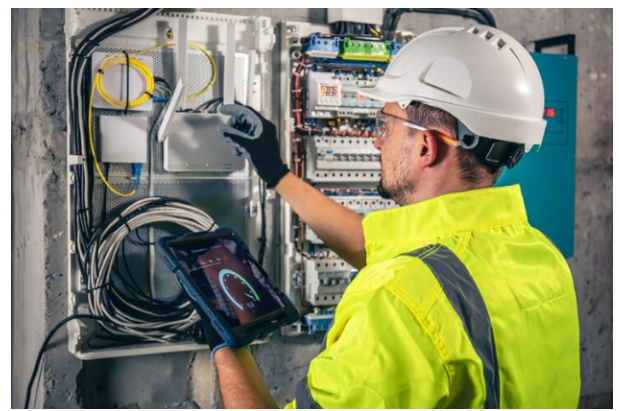Enhancing Efficiency: A Comprehensive Guide to Employee Monitoring Software and New Employee Time Tracking for Big Companies
Understanding Employee Monitoring Software
Employee monitoring software is a technological solution utilized by businesses to track and analyze the activities and behaviors of their employees during work hours. This software enables employers to gather data on various aspects of employee performance, including time spent on tasks, websites visited, keystrokes logged, and applications used. By providing insights into employee productivity and behavior patterns, monitoring software allows employers to optimize workflows, identify areas for improvement, and enhance overall efficiency. While employee monitoring software offers valuable benefits in terms of productivity enhancement and resource management, it also raises concerns regarding employee privacy and ethical considerations. Therefore, it is essential for organizations to establish transparent policies and practices to ensure a balance between monitoring objectives and respecting employees’ rights and privacy.
Benefits of Employee Monitoring Software in Big Companies
Employee monitoring software provides big companies with a multitude of benefits that contribute to improved productivity, streamlined operations, and enhanced organizational performance. Firstly, it offers valuable insights into employee activities, enabling employers to identify inefficiencies and optimize workflows effectively. By tracking time spent on tasks and projects, businesses can allocate resources more efficiently, leading to better project management and higher productivity levels. Additionally, monitoring software helps enforce compliance with company policies and industry regulations, reducing the risk of legal issues and ensuring a safer work environment. Moreover, by promoting transparency and accountability, employee monitoring fosters a culture of responsibility among employees, ultimately driving performance improvements and fostering a more efficient and productive workplace in large corporations.
Features to Look for in Employee Monitoring Software
When considering employee monitoring software, it’s essential to prioritize features that align with your company’s specific needs and goals. Look for software solutions that offer comprehensive monitoring capabilities, including real-time tracking of employee activities such as internet usage, application usage, and time spent on tasks. Additionally, consider solutions that provide customizable reporting features, allowing you to generate detailed insights into employee productivity and behavior.
Furthermore, seek out software with robust security measures to protect sensitive data and ensure compliance with privacy regulations. Features like user authentication, data encryption, and access controls can help safeguard your organization’s information.
Finally, consider software that offers integration with other business systems and tools, such as project management software or HR software, to streamline processes and enhance efficiency across your organization.
Implementing Employee Time Tracking Systems for New Hires
When introducing new employee time tracking for big companies systems for new hires, it’s crucial to prioritize seamless integration and comprehensive training. Begin by selecting a user-friendly system that aligns with your company’s workflow and requirements. Provide thorough training sessions to ensure new employees understand how to use the system effectively and accurately record their working hours.
Additionally, establish clear policies and procedures for time tracking to promote consistency and transparency across the organization. Communicate expectations regarding punctuality, breaks, and time-off requests to new hires from the outset.
Regularly monitor the implementation process, gather feedback from employees, and make necessary adjustments to optimize the system’s effectiveness. By investing time and effort into a well-planned implementation strategy, you can ensure a smooth transition for new hires and maximize the benefits of employee time tracking systems.
Choosing the Right Software
Selecting the most suitable employee monitoring software requires careful consideration of various factors to meet specific business needs effectively. Begin by assessing scalability to ensure the software can accommodate growth and evolving requirements as your business expands. Look for solutions that offer flexibility and scalability to adapt to changing workforce sizes and operational demands.
Integration capabilities are also crucial, as the software should seamlessly integrate with existing systems and tools, such as HR software or project management platforms. This enables smooth data flow and enhances overall efficiency.
Furthermore, prioritize user-friendliness to promote adoption and ease of use among employees. Opt for intuitive interfaces and customizable features that align with your organization’s workflow and preferences.
By evaluating factors such as scalability, integrations, and user-friendliness, businesses can make informed decisions and select employee monitoring software that best suits their unique requirements and goals.
Best Practices for Utilizing Employee Monitoring Software
To maximize the benefits of employee monitoring software while maintaining employee trust and privacy, it’s essential to establish clear guidelines and best practices for its use within your organization.
Transparency: Communicate openly with employees about the purpose and scope of the monitoring software. Ensure they understand how data will be collected, used, and protected.
Balance: Strike a balance between monitoring employee activities for productivity and respecting their privacy rights. Focus on using the software to improve workflows and performance rather than micromanaging individual behavior.
Employee Involvement: Involve employees in the implementation process and decision-making regarding the use of monitoring software. Solicit feedback and address concerns to foster a collaborative and supportive work environment.
Compliance: Ensure compliance with relevant laws and regulations governing employee privacy and data protection. Implement robust security measures to safeguard sensitive information collected through the software.
Continuous Improvement: Regularly review and evaluate the effectiveness of the monitoring software. Use insights gathered to make informed decisions, refine processes, and enhance overall productivity and employee satisfaction.
Conclusion
Employee monitoring software has become an integral tool for modern businesses seeking to optimize productivity, enhance security, and ensure compliance. By providing valuable insights into employee activities and behaviors, this technology enables organizations to streamline operations, allocate resources efficiently, and mitigate risks effectively. However, it is crucial for businesses to approach the implementation and utilization of monitoring software with careful consideration for employee privacy, transparency, and ethical considerations. By establishing clear policies, fostering open communication, and prioritizing employee involvement, organizations can harness the benefits of monitoring software while maintaining a supportive and respectful work environment. As technology continues to evolve, businesses must remain vigilant in balancing the benefits of employee monitoring with the protection of employee rights and well-being to achieve sustainable success in the digital age.

